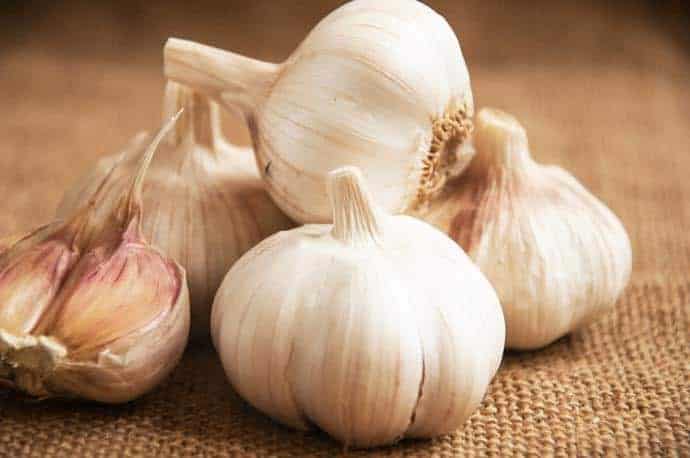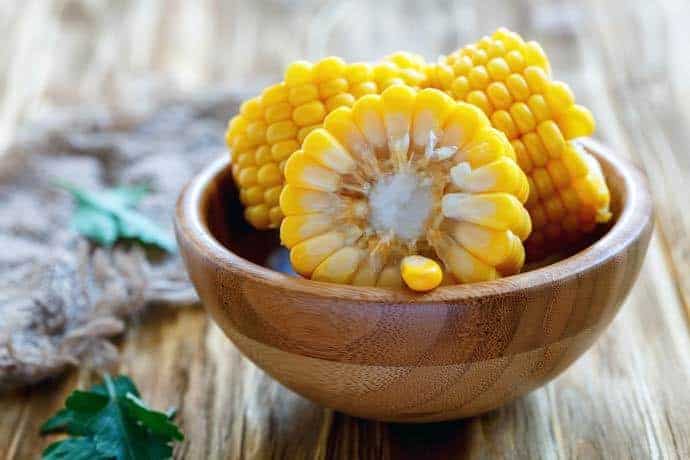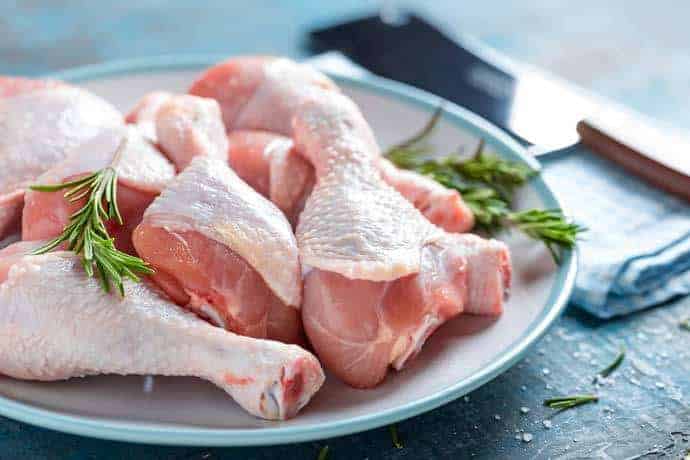The cold mornings where my mother used to serve us jamaican chicken soup while school’s canceled because of snow are forever etched in my mind. When I was little, those were my happiest mornings. I got to watch TV the whole day as delicious aroma’s wafting from the kitchen, thanks to my mother’s incredible cooking skills.
Today, I thought of reliving that moment when I learned school’s out and my son’s jumping with joy, enjoying a free day. And so I decided I’d share a classic Jamaican chicken soup recipe for you to try too. It’s a bit time-consuming, but all worth it!
More...
What You’ll Need
- 1 sweet potato (substitute with regular potato if you can’t find one)
- 3 cloves of garlic
- 1 tsp. pepper
- 1 tbsp. salt
- 1 chayote1 carrot
- 1/2 chicken (use your choice cuts)
- 1/4 yellow yam
- 1/4 cup of scallion
- 2 packets of Jamaican cock soup
- 1 corn, cut into pieces
- 1 scotch bonnet pepper (optional)
- PumpkinThyme, a few sprigs
- Water
- Vinegar (for washing chicken)
Sweet Potato

Sweet potatoes have been cultivated since it became popular in Europe in the 17th century, and are now a staple diet in many countries, including those in Asia and the United States. But do you know how to buy potatoes?
Always get those that are uniform in size, thick in the middle, and taper off at both ends. The sweet potato must be blemish-free, showing no cracks, and definitely no soft and rotting spots. Don’t make the lazy mistake of cutting off a rotten part, as it will still affect your dish’s flavor once cooked.
Store sweet potatoes in a dry, dark, and well-ventilated place if you want them to last more than two weeks. Never refrigerate a sweet potato. Otherwise, you’ll turn its natural sugar into starch.
Garlic Cloves

A garlic ‘clove’ is a wedge. You call the whole garlic a ‘head’ or a ‘bulb’. It’s easy to get confused with this especially if you’re not the cook in your household, so be careful when following the recipe and know your garlic. Get those that have plump, firm bulbs with dry skins. Soft cloves and those you see refrigerated in grocery stores should be avoided.
Always store fresh garlic in an open container in a cool, dry place. Once a clove has been broken, you have 3-10 days to use it before it grows mold. If unbroken, the bulb will last a good eight weeks.
Pepper

In the United States, pepper is used in almost all recipes. But did you know that it was once used as a currency or collateral? Pepper used to be so valuable and costly, that only the affluent people could afford it. Even the Dutch still use the expression “peperduur” which means “as expensive as pepper”.
I suggest you get pepper in whole and just crush or grind them into powder yourself. Why? Whole peppercorns will give you its freshest flavor. Ground pepper you see in stores are sometimes adulterated and mixed with indistinguishable spices.
Salt

You can use ordinary table salt for this recipe, but if you’re feeling fancy and want a more aromatic salt, then you can use smoked salt or kosher salt. Please note, though, that recipes call for ordinary fine salt as a standard. Salt must be added early on when you’re making soup because the flavor will concentrate over time.
Rule of thumb: 1 tbsp. of table salt = 1.5 tbsp. of kosher salt.
Chayote

A chayote is a pear-shaped fruit with edible flesh and skin. It’s got a large pit and texture that’s a cross between a cucumber and a potato. It’s also known as cho-cho, pear squash, and mirliton. Make sure you choose a chayote that’s firm to the touch. Although they may have natural deep wrinkles, the skin shouldn’t be excessively furrowed.
Refrigerate the chayotes immediately. You can store it in there for up to four weeks if lightly wrapped. Sliced chayotes should be kept in an air-tight container placed inside the refrigerator, and should be used within five days.
Carrot

When shopping for carrots, see to it that they’re firm, crisp, and with a deep color. Don’t get those that have started to sprout and those with soft spots. You also want to avoid split carrots. If you see a dark coloring at the carrot’s crown, that often indicates that the carrot is old.
To store carrots, remove the tops, put them in a plastic bag, and refrigerate. They should last in there for about two weeks.
Chicken

How do you know you’re buying fresh chicken? The best way to know for sure is to examine the fat. The fat should be a deep yellow or white. Never buy one that’s got pasty fat or one that’s turning gray. It should be packaged in such a way that it’s leak-free and well-wrapped. Of course, you’d want to check the date to see when it was packed or until when it’s good to use.
Chickens must be refrigerated as soon as possible after purchase. Have you been storing chicken for longer than two weeks? If so, make sure to wrap it in heavy-duty foil or put it in a freezer bag to avoid freezer burn. One common mistake when handling chicken is thawing it at room temperature. Don’t. You’re practically attracting bacteria when defrosting chicken on your kitchen counter. Always defrost chicken inside the refrigerator!
Yellow Yam

Yams are often mistaken for sweet potatoes. The truth is, yams are drier and starchier than sweet potatoes. They are often grilled or baked. Never eat yams raw as they are toxic, but they’re perfectly safe when cooked.
Uncooked yams must be stored in a dark, cool, and dry area, and they’ll be good for two weeks. Never refrigerate yams, but you can freeze them, provided that you put them in an airtight container with a bit of room.
Scallion

Scallions, also called green onions, can be used raw or cooked. If you want a less intense onion taste, you’ll use scallions. They’re harvested very young from the bulb-forming regular onions we know. When buying scallions, go for the ones with the brightest color and undamaged leaves. The stem ends should be firm.
To keep scallions fresh, stand them inside a jar filled with two inches of water. Cover the top leaves with a loose plastic bag, and put them inside the refrigerator. You’ll have crisp scallions for a week if you store them this way.
Jamaican Cock Soup Packet
It may sound like a novelty item, but cock soup packets from the Caribbean is no joke. This soup packet contains thin, small-cut noodles and dehydrated carrots. Although the packet doesn’t actually contain chicken, it still gives a savory warmth you’ll need during a winter chill. What does it taste like? It tastes more like fish broth than chicken.
This is why chicken pieces are included in the ingredients list. When used in conjunction with other foods, the Cock Soup packs a punch and may very well be just what you need on cold nights.
Corn

When buying corn, check to see if the stem end is moist and fresh. If you notice a dry, browning stem that indicates it’s was harvested days ago. You also want to check if the husk has small brown holes. It might mean the corn has worms and other insects inside.
Did you know that the silks strands tell you how many kernels are on the corn cob? If you notice that the corn has not enough silk strands that means you’ll find gaps on the cob.
Scotch Bonnet Pepper (optional)

You may or may not use scotch bonnet pepper in your Jamaican chicken soup. It’s an optional ingredient. Scotch bonnet is a variety of chili pepper with a heat rating of 100,000 to 325,000 on the Scoville scale. It’s found mostly in the Caribbean’s and West Africa.
Scotch bonnet peppers are a bit tricky to handle. You must store them immediately while covered in its original sealed container. Put it in the warmest part of the refrigerator. You may want to wear gloves while handling a pepper as hot as the scotch bonnet.
Pumpkin

Pumpkins are perhaps the most popular crop in the United States. Used for both consumption and yearly decoration, practically the entire pumpkin is useful. The seeds, flesh, flowers, and leaves are all edible.
You must store fresh pumpkins in a cool, dry place if you want it to last for a month. When shopping, go for the mature ones with the brightest color and finest texture. Do not store pumpkins in hot and humid areas. Thoroughly wash the pumpkin after purchase and place on a piece of cardboard in a dark place.
Thyme

Thyme is an extremely versatile herb. It’s popularly used in breads, pasta, and meat dishes. To preserve its flavor and subtle fragrant, put the thyme in an airtight container and place in preferably a dark area. Why? Because light and moisture will diminish thyme’s flavor. If you’re not growing them yourself, try to buy a bouquet that has plump leaves.
The color of the leaves should be uniform. Check for any blemishes. When buying herbs, you need to use both your sense of sight and smell. Fresh thyme gives off a stimulating aroma.
Steps To Follow When Making Jamaican Chicken Soup
Step #1 - Wash The Chicken With Vinegar
To remove impurities, wash chicken with vinegar. Vinegar is known to remove salmonella and other bacteria. Put one cup of white distilled vinegar in a basin and soak the chicken quickly in it. You can also use a spray bottle for the white distilled vinegar and just start spraying the chicken before you rinse it off under cold running water.
Step #2 - Cut The Chicken Into Pieces

Carving the chicken is a bit tricky, but here’s a quick guide you can follow:
Start with the chicken leg that’s facing you. Pull it away from the breast and slice in between to separate them. Bend the leg and thigh back to make them more pliable for removal. Simply repeat this process with the opposite leg. Keep the breast’s open cavity away from you. You’ll feel a bone running down the middle of the chicken breast. That’s called the keel bone.
Cut the keel bone on one side using your knife. Try to stay as close to the keel bone as possible. Now, follow down to the wishbone. You’ll do the same thing with the other breast.
Step #3 - Place Chicken In The Pot For Cooking
The pot where you’ll be cooking the chicken should have 5 quarts of water in it with two tablespoons of salt. Now you have the chicken stock. Parboil the chicken for 40 minutes on medium heat. Parboiling is a good way to cook meat without disturbing nor decreasing the meat’s natural flavors.
Step #4 - Prepare The Pumpkins, Yam, Potatoes, And Chayote

Via caribbeanpot.com
Rinse your veggies under cold running water for about 30-60 seconds. Plain tap water is enough to wash out worms and germs, so no need to get a vegetable wash. Peel and cut the pumpkin into squares. Do the same with the yam, potatoes, and chayote. You can cut them in any size, but having a uniform size is preferable.
Step #5 - Drain The Chicken Stock And Refill
After soaking the chicken in its stock for about 40 minutes, pour out the water and refill the pot with four quarts of fresh water. This is to get the dish ready for the Jamaican cock soup packet. If you retain the chicken stock that contains salt, and you mix it with the cock soup packet, you’ll have a very salty dish.
Step #6 - Add The Herbs And Spices
This step involves the garlic, thyme, scallions, onions, black pepper, and if you wish, the scotch bonnet pepper. Mixing in the herbs and spices at this stage is crucial to the chicken’s ability to absorb all sorts of interesting flavors. Thyme isn’t a deal breaker here, but it sure adds character to the soup.
Step #7 - Stir In The Cock Soup Mix
Add in the cock soup mix into the pot. Frequently stir the pot so that no ingredient sticks to the bottom. The goal is to let the soup thicken a bit, and that’ll take about almost an hour. Make sure you don’t let the soup boil for too long for two reasons: (1) You don’t want to overcook the tiny noodles that come with the cock soup mix and (2) You don’t want a super thick, starchy chicken soup.
Step #8 - Add The Corn And Carrots

Via poly-service.info/
Corn and carrots don’t take a lot of time to cook. That’s why you can add them this late in the cooking process. It only takes about eight minutes for corn and carrots to cook. When using these two ingredients, you want to cook them until they’re soft, but also so it’s still hard enough to give you a bite. A vegetable always tastes fresh when there’s a bit of a crunch to it, right?
Awesome Cooking Tips!
- Submerge vegetables in ice water if you want to stop them from overcooking. When you’re ready to serve, submerge them briefly in boiling water!
- Don’t wash the carrots until you’re ready to use them. Also, reconsider storing them next to apples and pears. You’ll notice they ripen quickly when they’re stored together!
- Don’t throw those extra chicken meat and leftover bones away! You can still use them for making gravy.
- Try putting a board under your pumpkin and see how that deters bugs and prevents the pumpkin’s bottom from rotting away. Do not put vegetables on a concrete surface.
Final Thoughts
I hope you’ve enjoyed the article and relived your own childhood memory involving homemade soups! Do you use any other ingredient for your Jamaican chicken soup? I remember my aunt putting dumplings in there, and it just worked perfectly with the soup.
If you have suggestions and your own tips to give, please feel free to share them in the comments below. If you enjoyed the article, we’d appreciate it very much if you can share it with friends and family. Thanks!

